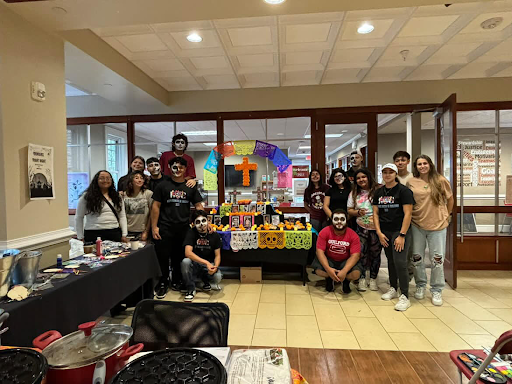You are walking downtown and suddenly pass a beautiful wall mural. It is colorful, shows part of a large tree connected to a real tree behind the wall and people looking like they are painting the wall. As you stare at this work of art you wonder: who had the idea to create this masterpiece?
In 2011, two Guilford College alumnae, Alyzza May ’10 and Katrina Siladi ’10, were working in Edible Schoolyard at the Greensboro Children’s Museum.
“We were friends and … talking one day, (when we) realized we both liked murals,” said May. “We’re both like ‘oh, let’s make this more than a conversation.”
Soon afterward, May and Siladi pioneered the Greensboro Mural Project. Within three months, their first mural, called the Lindsay Street Mural, was created at the Edible Schoolyard.
“(The Greensboro Mural Project is) a creative arts project … with the aim of using murals as a tool for telling stories, of connecting with the community and of beautifying the community through the installation of murals,” said May.
With the concept of bringing together a community through art, the two continued brainstorming ideas of where and what to create next.
After their first mural, which answered the question, “what would make Greensboro a healthier city,” and with the help of Liz Seymour, executive director at the Interactive Resource Center, they thought of another community mural to start. This one examined the question “what makes home?”
The group collected 100 responses from strangers, many who received services from the IRC. By March 16, 2013, the team began to work on the IRC mural with help from Greensboro artist Justin Poe’s design.
The process to create murals such as these takes time and effort. From planning what to create through to the final product, it is a challenging yet rewarding task.
“You get a wall secured, (and) that sounds a lot harder than it is,” said Alejo Salcedo, artist for the Greensboro Mural Project. “Then once you have your wall, depending on how much freedom you have, you decide what issue is relevant.”
The process from beginning to end includes agreeing upon a theme based on a relevant community issue, posing a specific question, interviewing the public, selecting a principal artist(s), proposing a design that is then reviewed by the community and gathering diverse artists with a passion for expression to paint the wall(s).
“I think it it’s really exciting to be able to share our individual perceptions of Greensboro, how we exist in it and then have that shape a collective knowledge and an experience that can be interpreted into art,” said Isabelle Brace, artist for the Greensboro Mural Project.
So far the project has created three murals in total. This, however, is not the end for the Greensboro Mural Project. Many of those who are a part of the group have ideas on what they would like to see in the future.
“I’m really passionate about doing a police brutality and a black lives matter mural,” said senior Niki Gaines, intern for the Greensboro Mural Project. “Anyone who is interested in art and social transformation should definitely get involved.”
There is room for anyone to get involved.
“We would like more community members to help,” said Salcedo.
Examining social issues, creating awareness and problem solving are the unifying mission of this artistic endeavor.
“Never doubt that a small group of thoughtful, committed citizens can change the world,” said Margaret Mead, world-renowned anthropologist. “Indeed, it is the only thing that ever has.”
As a community, Greensboro is preparing for proactive change, one mural at a time.





